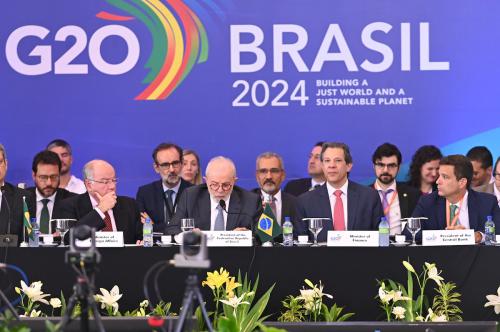The race to the finish line for the Trans-Pacific Partnership (TPP) trade agreement is now well under way. Since Congress approved fast-track authority for the President to implement the TPP and other trade deals, there is now a 90-day window open for final deliberation, with each day counting down toward the deadline.
This means that Congress and the public at large have a short period of time left to weigh in on the agreement’s strengths and weaknesses. Barring any major disruptions during this review phase, the TPP will take effect by early January 2016. It encompasses the United States and 11 other nations: Australia, Canada, Japan, Malaysia, Mexico, Peru, Vietnam, Brunei, Chile, New Zealand and Singapore.
An important element of the proposed agreement is section 14, which deals with electronic commerce. According to the Office of the United States Trade Representative (USTR) in the Executive Office of the President, TPP is expected to put in place the most comprehensive set of rules ever negotiated addressing digital trade and the promotion of Internet-based commerce. Further, the USTR indicated that the TPP is designed to preserve the single global digital marketplace and to ensure the free flow of global information and data that drive the digital economy.
Among the TPP’s digital objectives are:
- Securing commitments not to impose customs duties on digital products (e.g., software, music, video, e-books)
- Ensuring non-discriminatory treatment of digital products transmitted electronically, and guaranteeing that these products will not face government-sanctioned discrimination based on the nationality or territory in which the product is produced
- Establishing requirements that support a single, global Internet, including ensuring cross-border data flows, consistent with governments’ legitimate interests in regulating for purposes of privacy protection
- Creating rules against localization requirements that force businesses to place computer infrastructure in each market in which they seek to operate, rather than allowing them to offer services from network centers that make better business sense
- Ensuring close cooperation among TPP countries to help businesses, especially small and medium-sized businesses, overcome obstacles and take advantage of electronic commerce
- Promoting public participation and transparency in the development of laws and regulations affecting the Internet, including opportunities for public comment
Although all of these aspects are worthy goals, they are premised on the notion that they will enhance a pre-existing single global digital marketplace. However, only the U.S. and Japan among the TPP countries can be characterized as electronic-commerce powerhouses; having the other countries on board will not accomplish much in this area.
The more telling current proceeding is the fast-track public consultation of the European Union that deals with the creation of a Digital Single Market (DSM) among the EU’s 28 member countries, with a total population of more than 500 million residents. That consultation will close by the end of the year, making it important for the U.S. to understand fully how the EU might be designing its own DSM regime.
The EU’s focus on online platforms covers their social and economic roles; levels of transparency (e.g., in search results); terms of use; ratings and reviews; the use of information by these platforms; the relationship between platforms and their suppliers; the conditions of switching between comparable services offered by platforms; and the role of online intermediaries, including ways to tackle illegal content on the Internet. The consultation also concerns initiatives on the free flow of data, a European Cloud initiative and the collaborative economy.
These parallel proceedings are destined to intersect at some point, so the best pathway to a truly single global digital marketplace must account for policy thinking from both the U.S. and the EU. The TPP may be grabbing headlines for its extensive labor, environmental and anti-corruption measures, but the narrowness of its geographic footprint will not enable the TPP to achieve comparable impact in electronic commerce. Timely coordinated activities with Europe need to be undertaken—the sooner the better—so that the TPP’s premise of a single global digital marketplace reflects a firmer foundation.



Commentary
Converging roads for the single global digital marketplace
November 16, 2015